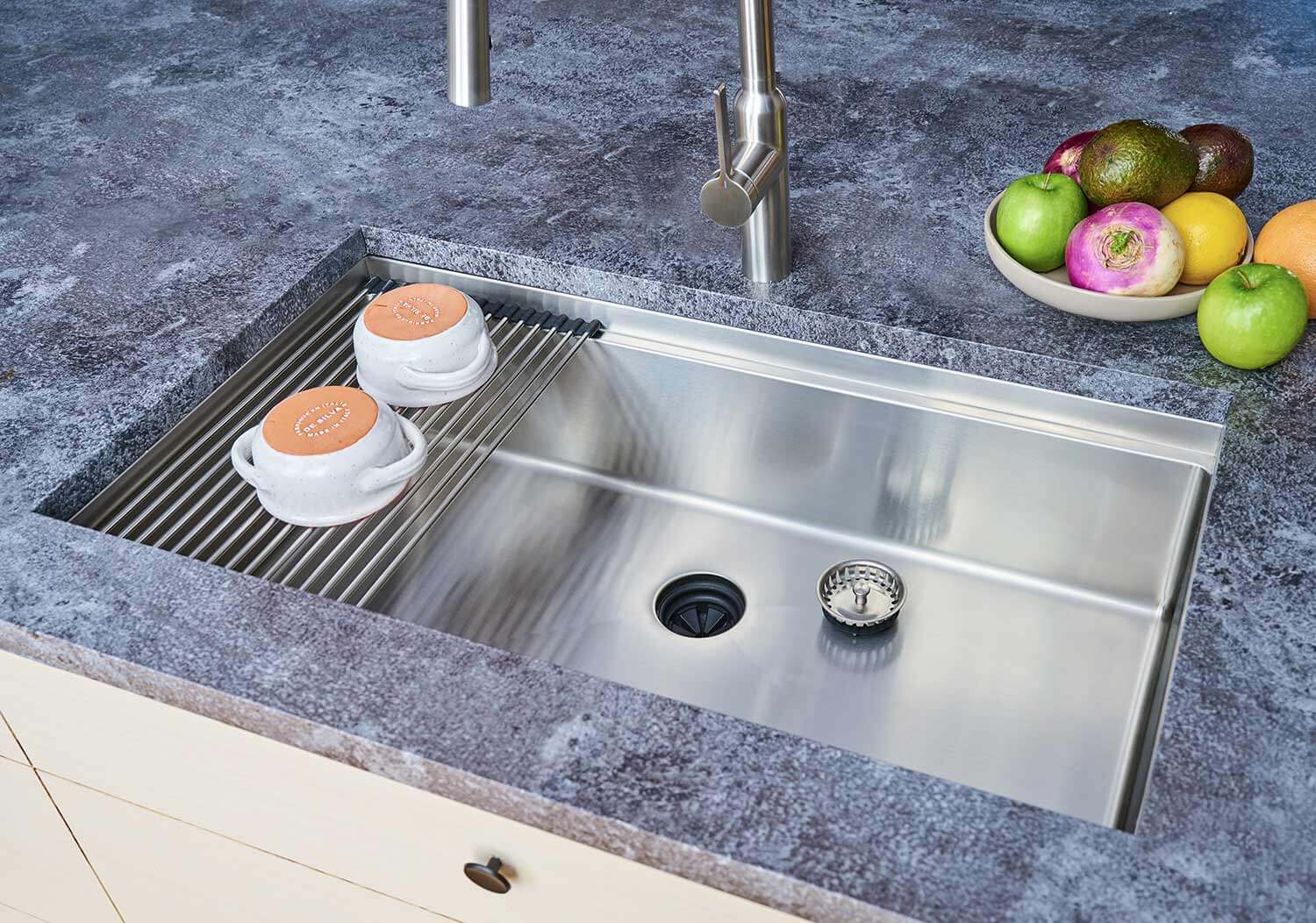Pros and Cons of Stainless Steel Kitchen Sinks
When it comes to choosing the ideal kitchen sink, a common question often arises – choosing between the various materials available. From classic porcelain to durable cast iron and the ever-popular stainless steel, homeowners have a lot of options to choose from.
Stainless steel kitchen sinks have surged in popularity in recent years, and for good reason. Their sleek appearance, resistance to rust and stains, and relative ease of maintenance make them an attractive option for many. But are they the right choice for you?
In this article, you’ll learn about the pros and cons of this material. In addition, this article will shed light on factors that can seriously affect your daily cooking experience and the overall aesthetics of your kitchen. So, whether you’re struggling with the challenge of keeping your sink’s surface clean or you’re considering upgrading your kitchen, read on to discover valuable insights to help you make an informed decision.
1.What is stainless steel?
Stainless steel is a special metal. It’s made from a combination of iron and chromium. This helps it resist rust and stains. They also add other substances like nickel and carbon to make it strong and easy to shape. This makes stainless steel a great choice for kitchen sinks because it looks great and lasts a long time.
2.Advantages of Stainless Steel Kitchen Sinks
In this section, you’ll explore the advantages of stainless steel kitchen sinks, focusing on why they’re popular with homeowners.
1) Durability
Stainless steel kitchen sinks are built to last. Unlike porcelain or ceramic, they don’t chip or crack easily. They’re made of sturdy materials that last a long time and barely wear out. If you want a sink that’s built to last, stainless steel is the best choice.
It can also handle hot pans without damage. Unlike other sink materials that can be damaged by high temperatures, you can safely place hot pans directly into the sink. Stainless steel is a solid choice for any kitchen.
2) Low Maintenance
Stainless steel kitchen sinks are known for being easy to care for. Spills and stains can be quickly cleaned up with just a standard household cleaner. Unlike some materials, these sinks resist food spills and rust. This means they retain a shiny, nearly new look even after years of use. There’s no need to scrub hard or use special care products; a quick wipe is usually enough.
This combination of durability and easy maintenance ensures your kitchen maintains a fresh, polished look with minimal effort. For those who want a functional yet beautiful kitchen centerpiece, investing in stainless steel is a smart move.
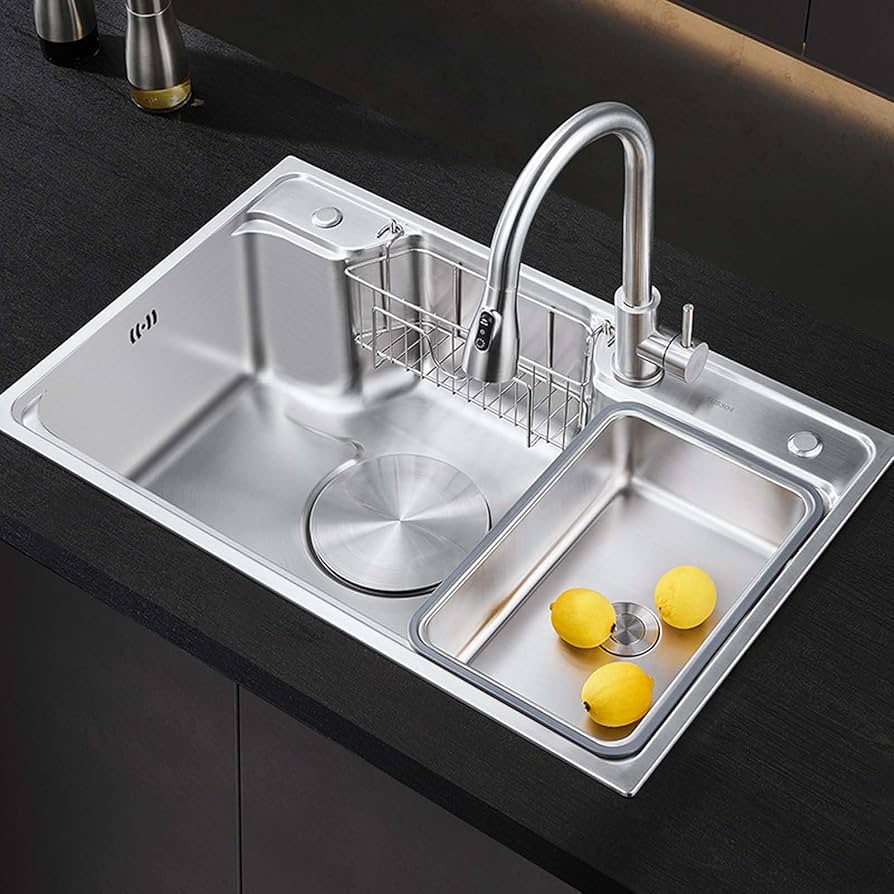
3) Versatility
Stainless steel kitchen sinks come in a variety of finishes, glossy, matte, and even colored. Whatever style you prefer, there’s a sink that’ll suit your kitchen and make it personal.
In addition, these sinks will suit any kitchen theme, whether modern, rustic, or classic. They blend seamlessly with your design, adding charm without taking away from the main theme. As you tweak or redesign your kitchen over the years, your stainless steel kitchen sinks will stay relevant. It’s a fusion of style and adaptability.
4) Cost-effectiveness
When it comes to value for money, stainless steel sinks are the clear winners. Unlike expensive stone or porcelain sinks, stainless steel kitchen sinks offer both price and quality. Stainless steel sinks are durable and stylish without the high price tag.
In addition, the range of options is quite compelling. Prices vary based on the thickness and workmanship of the sink. So whether you’re budget-conscious or looking for a premium option, there are stainless steel models to choose from. Essentially, you’re investing in a product that combines style and durability, ensuring you get your money’s worth.
5) Lightweight
Stainless steel kitchen sinks are lighter in weight than sinks made from many other materials. This makes them easier to install. You don’t need special tools or a lot of people to install them into your kitchen. It’s a simple process that saves time and effort.
Stone sinks, on the other hand, are much heavier. Installing them can be tricky. They often require sturdier cabinets to support their weight. There’s also a greater chance of problems, such as the sink falling, during installation. With a stainless steel sink, you can install it easily and safely, making it a smart choice for many homeowners.
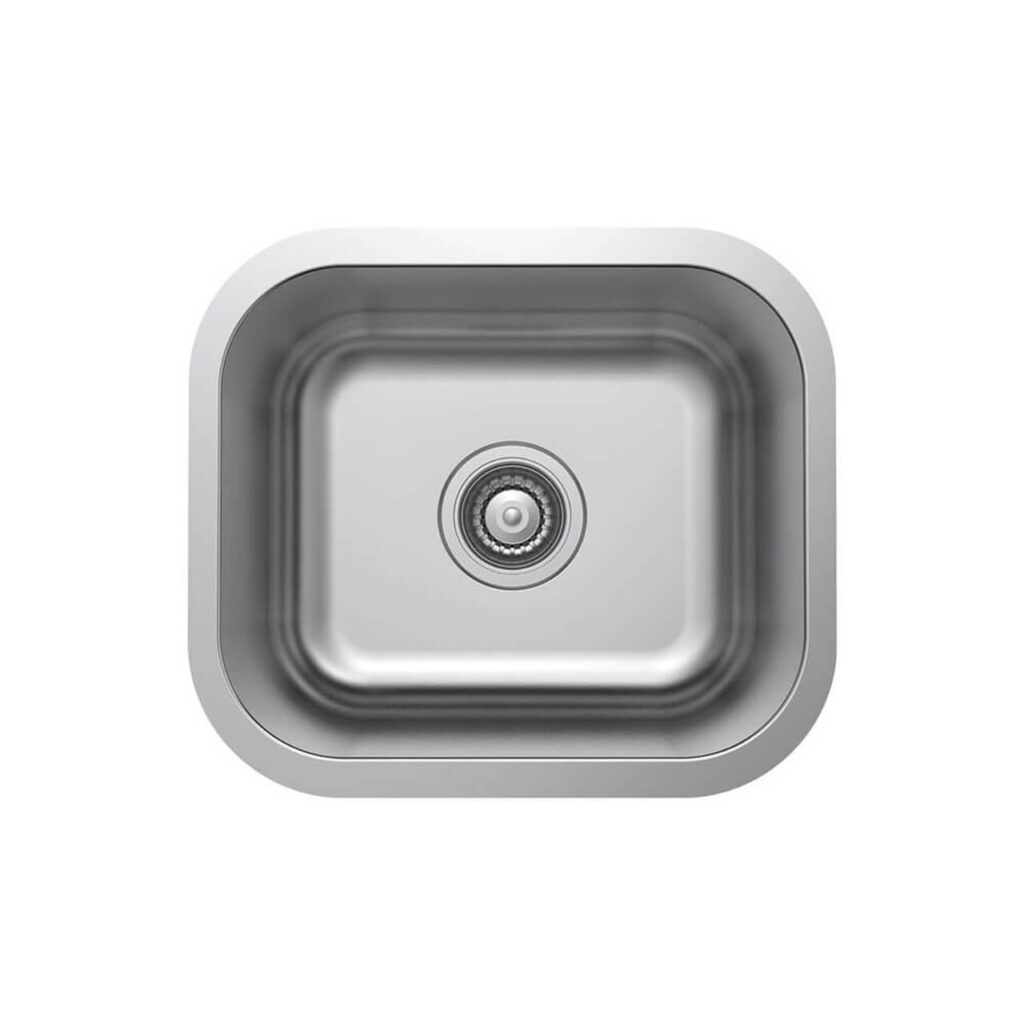
6) Hygiene
Stainless steel offers significant advantages when it comes to cleaning. Its smooth, non-porous surface means there are fewer places for dirt, food, and moisture to hide. As a result, cleaning is no longer a chore; a simple wipe is usually enough to keep it shiny. But it’s not just for looks. A major benefit is the surface’s resistance to bacteria and mold.
Many harmful bacteria need tiny gaps and moisture to thrive, but stainless steel deprives them of the opportunity to thrive. This is crucial in a kitchen environment where hygiene is of utmost importance. Therefore, stainless steel sinks are the best choice for homeowners who want a clean, health-conscious kitchen.
7) Environmental Protection
Stainless steel is completely recyclable. After use, it can be turned into a new item without losing quality. This means less waste and saved resources. Unlike other materials that may become garbage, it can always be reused.
By choosing a stainless steel sink, you are helping to protect the environment. You can reduce waste, use less new materials, and reduce overall harm to the earth. So not only do you get a durable sink, you also make a green choice for the earth. This is good for both your family and the environment.
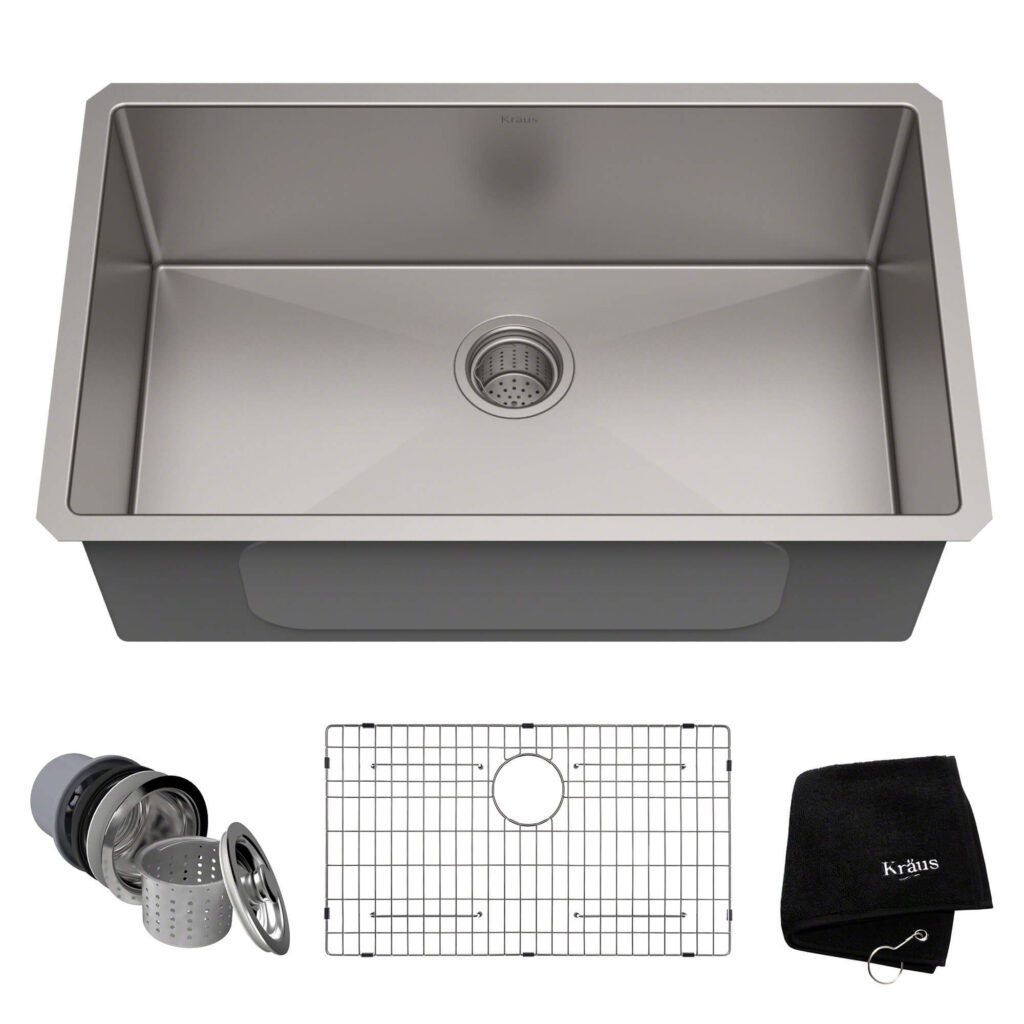
3.Disadvantages of stainless steel kitchen sinks
While they have many benefits, it is crucial to understand their potential disadvantages before choosing a sink.
1) Scratch Problems
Poor quality stainless steel kitchen sinks are prone to scratches, which affect the appearance. Although these marks are usually small, they will make the sink look old.
Scratches will naturally accumulate with daily use. Everyday activities, like washing dishes, leave marks. Over time, these marks affect the surface of the sink and can breed bacteria if not cleaned. Choosing a higher quality stainless steel can help avoid such problems.
2) Noise Issues
Stainless steel kitchen sinks can be noisy, which is a drawback for some people. If a plate or cutlery is dropped in them, the sound will be louder than with other types of sinks. In a quiet home, this sudden noise can be annoying or alarming.
However, companies have found a solution. Many companies now add special mats to their stainless steel sinks. These mats help reduce noise. So, if you are concerned about noise, look for sinks with these mats. They can make your kitchen experience quieter and more pleasant.
3) Water Stains and Fingerprints
Water stains and fingerprints can easily be left on stainless steel kitchen sinks, especially glossy ones. This can make the sink look messy or dirty, even if it looks clean.
You need to wipe it frequently to maintain the shiny and clean look. Using a soft cloth can help avoid these marks and keep the sink looking its best. So while stainless steel looks great, it requires more care to keep it stain-free and shiny.
4) Dent Potential
Thin stainless steel kitchen sinks are more susceptible to denting. If you drop a heavy object on them, you may see marks. This can affect the sleek look of the sink. Caution is key. Don’t drop heavy pots and clean gently. Choosing a thicker sink can help reduce the risk of dents and keep your sink looking great.
5) Aesthetic Considerations
Stainless steel may not be everyone’s first choice. Some people like the unique feel of stone or porcelain and think they add more charm to a room. Also, stainless steel may not be a good fit for a kitchen with a classic or vintage design. Other materials may be more suitable for this style and make the room look just right.
6) Corrosion Issues
Stainless steel can corrode if not treated properly. Using strong cleaners can break down its protective layer, causing it to rust faster. If exposed too much, the steel may develop small holes or spots, making it look bad and weakening its strength. It’s best to use a mild cleaner and give the sink a quick rinse if it comes into contact with harmful substances to keep it in good condition.
7) Temperature Characteristics
The temperature of stainless steel changes quickly. In cold weather, the sink will feel cold, unlike stone or wood sinks that maintain a more stable temperature. In addition, stainless steel does not retain heat well. Therefore, hot water in a stainless steel sink will cool faster than in a sink made of materials such as cast iron. It is great for hot pots, but not for keeping heat.
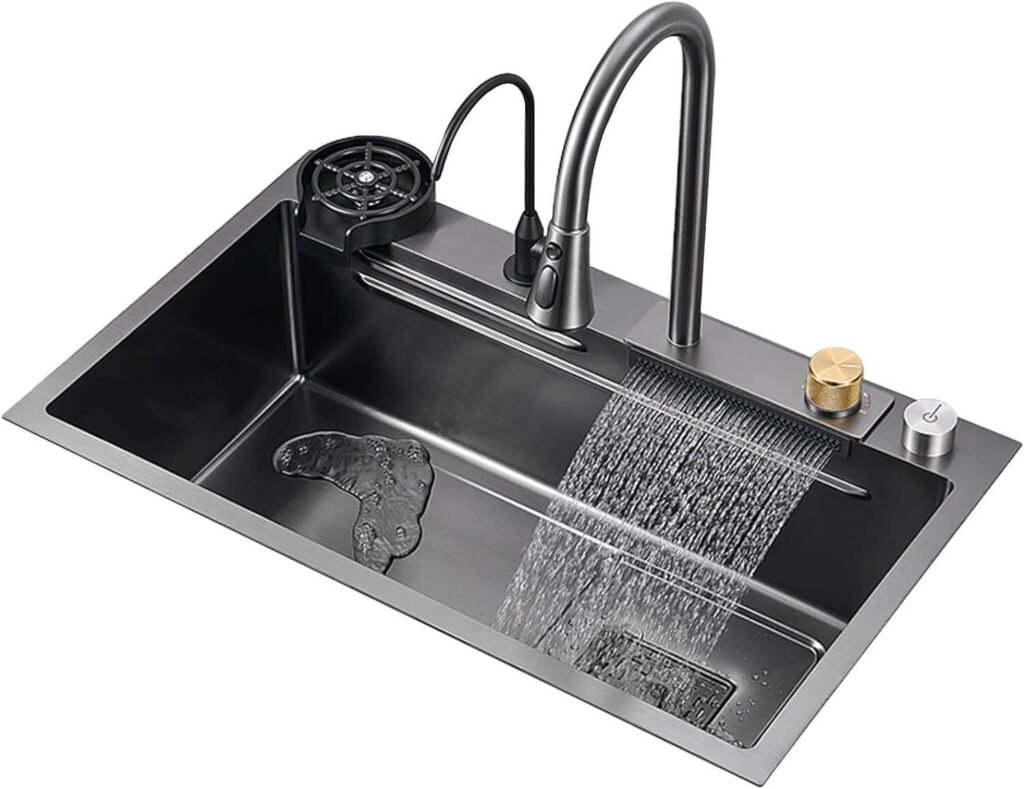
4.Conclusion
Stainless steel kitchen sinks are a great accessory for the kitchen. They are durable, easy to care for, and suitable for different kitchen styles. They are not prone to stains or rust, so it is easy to keep them beautiful. Although they can get scratched and make noise, you can take care of these problems or choose a sink with noise reduction features.
So, if you are considering a kitchen sink that combines strength and style,stainless steel is your first choice. Ready to upgrade your kitchen sink? Explore our range of high-quality stainless steel sinks today and make your kitchen more dazzling than ever!
